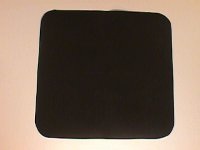Activated Charcoal - Well proven technology

Activated charcoal cloth was originally developed by the British Chemical Defense Establishment as a highly efficient filter medium for protection against nerve gas and other highly toxic vapors that might be used in chemical warfare. This is the reason for its outstanding advantage as a decontaminating material in commercial air and water purification applications.

ACC is 100% activated charcoal produced in a flexible textile form and it absorbs more effectively than any granular form of activated charcoal due to its micro-porous character and higher internal surface area as compared to the granular form. Because the activated charcoal cloth is so much more effective per unit area in removing odors than any other known agents, the thickness of the cloth can be significantly reduced without loosing effectiveness. The use of special manufacturing techniques results in highly porous charcoals that have surface areas of 300-2,000 square meters per gram. These so-called active, or activated, charcoals are widely used to adsorb odorous or colored substances from gases or liquids. The word adsorb is important here. When a material adsorbs something, it attaches to it by chemical attraction. The huge surface area of activated charcoal gives it countless bonding sites. When certain chemicals pass next to the carbon surface, they attach to the surface and are trapped.
The information above came from this site.
No comments:
Post a Comment